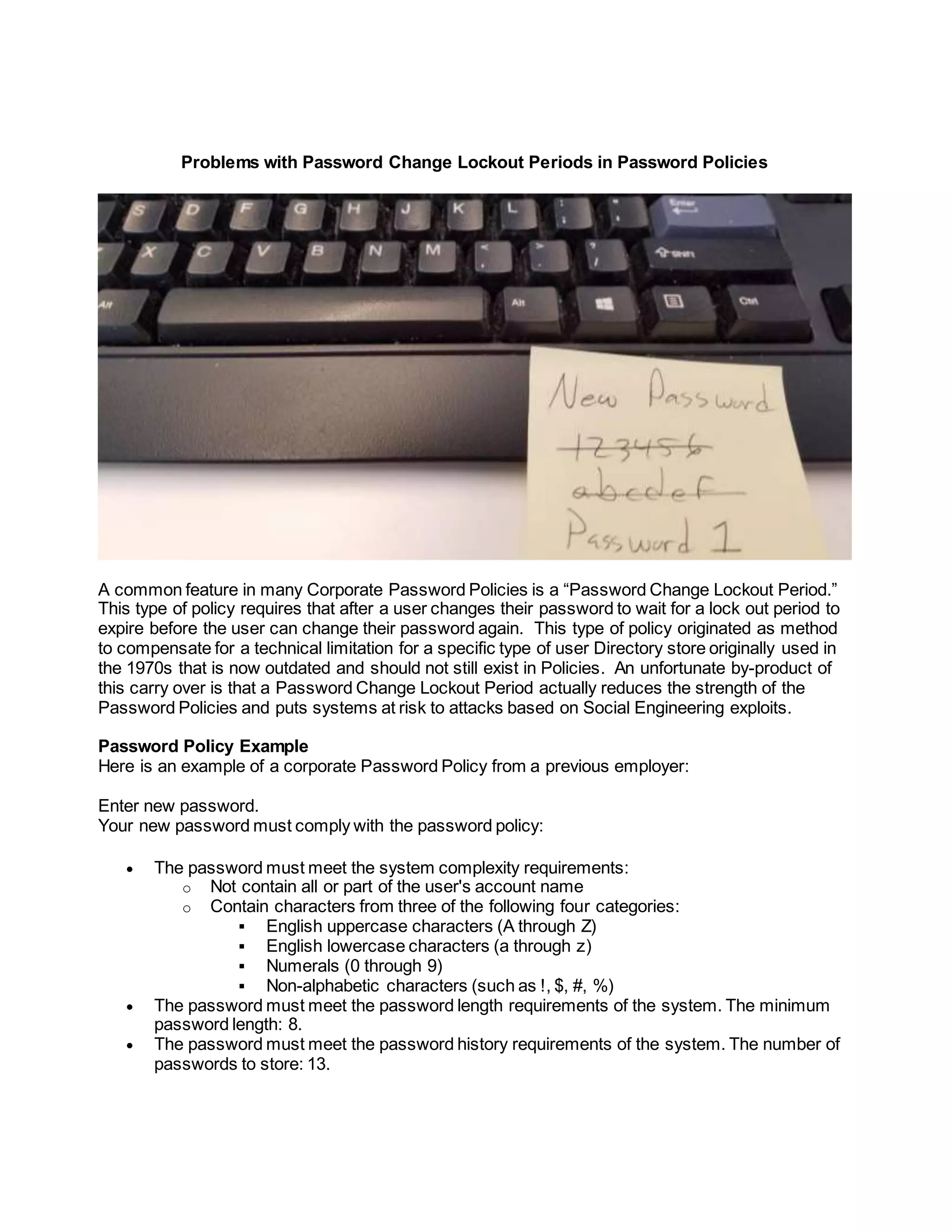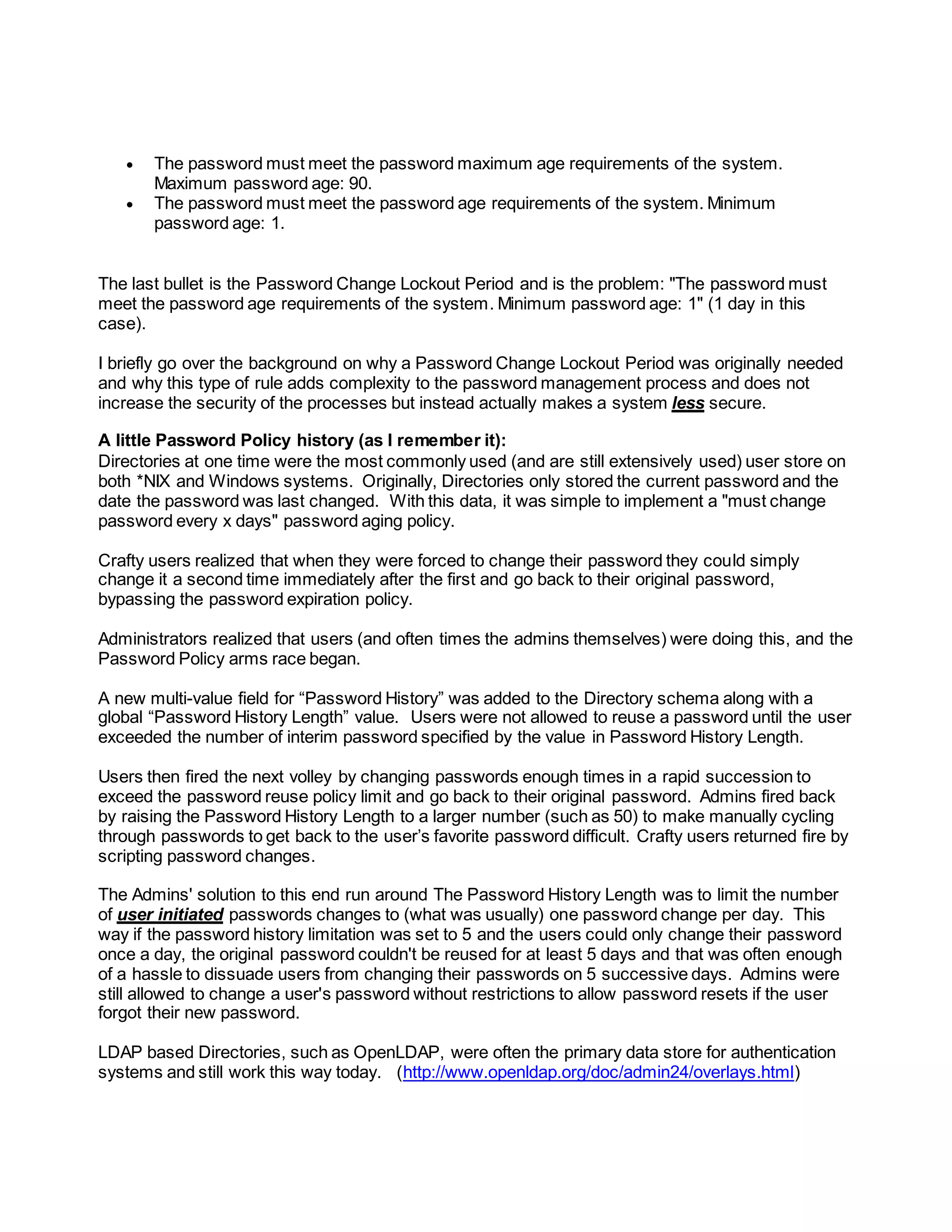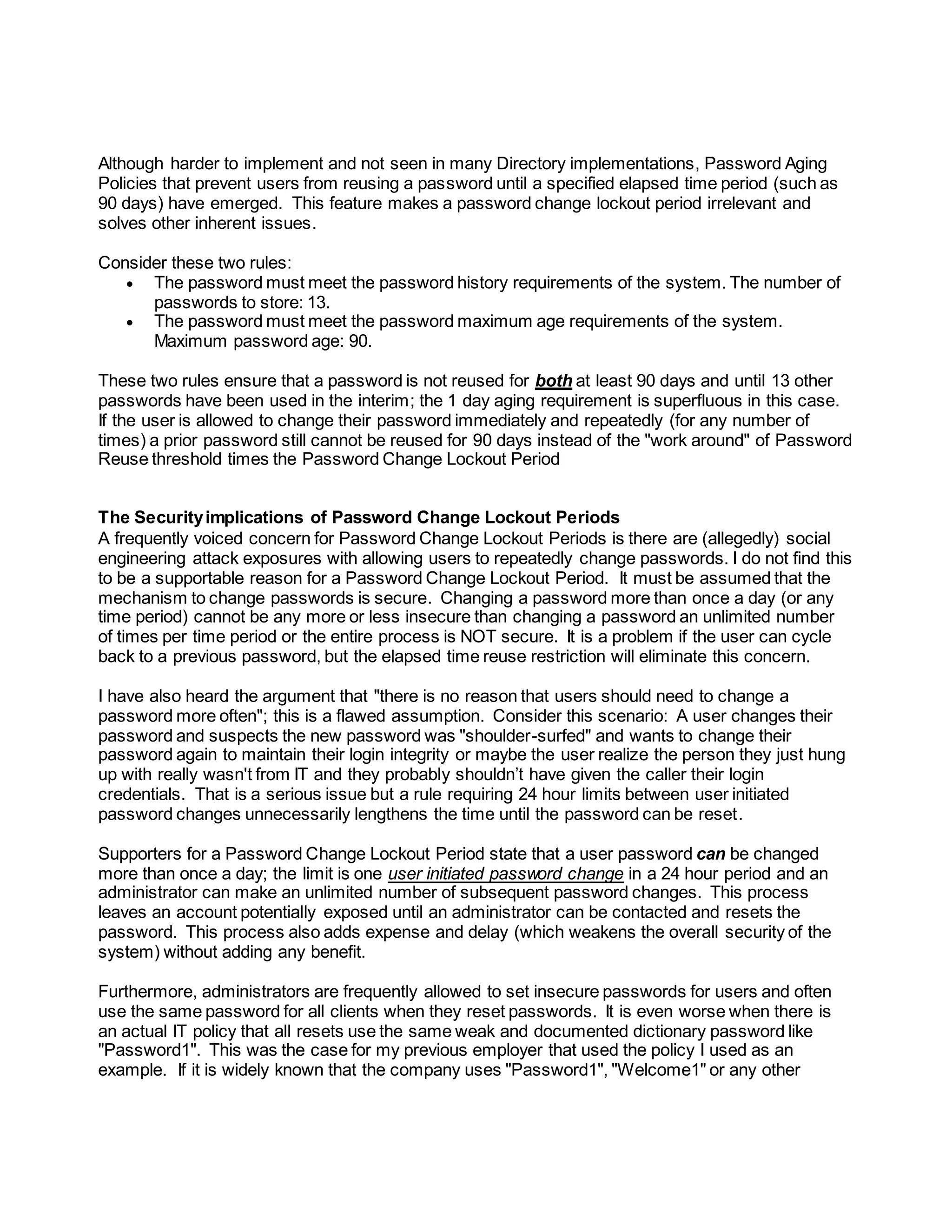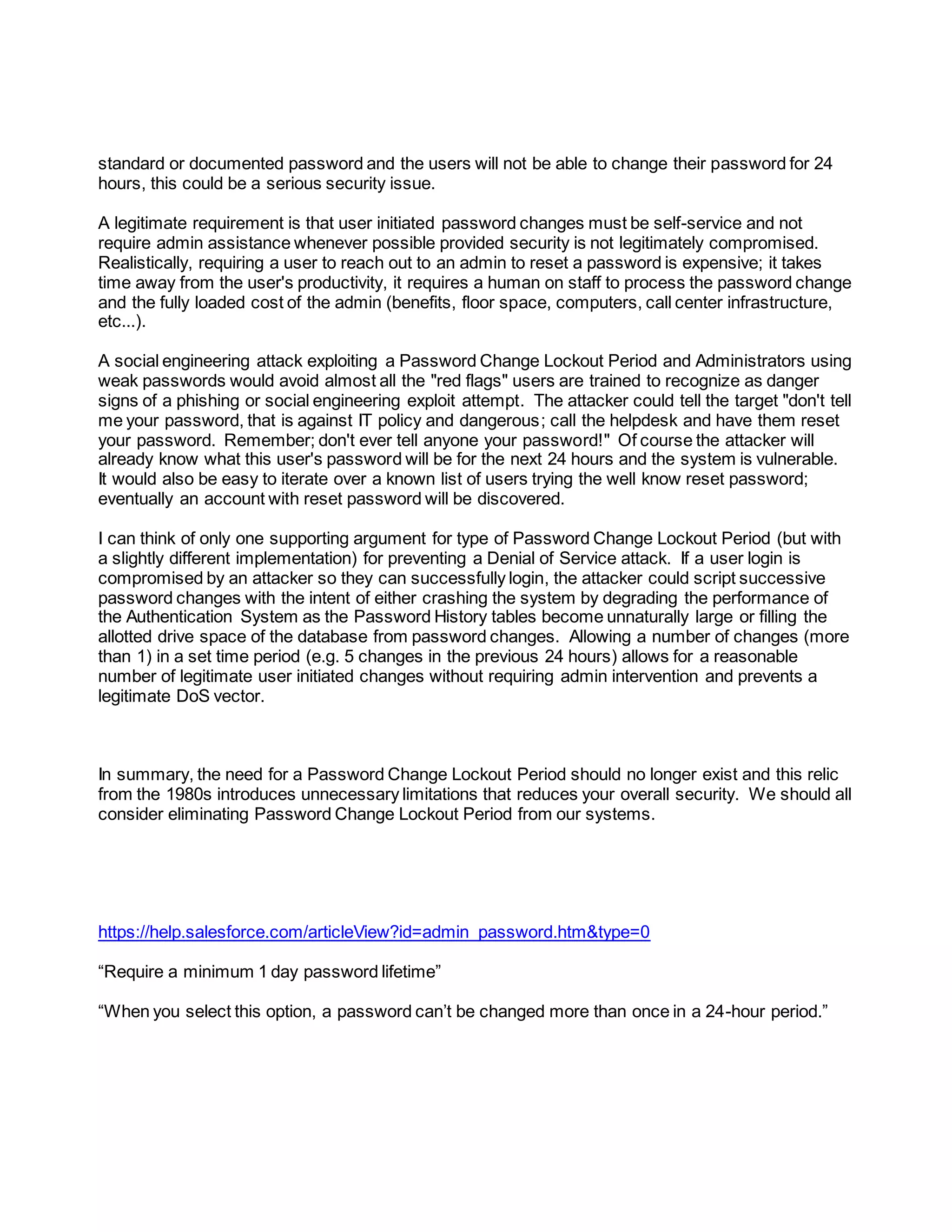The document critiques the outdated practice of implementing password change lockout periods in corporate password policies, arguing that these policies weaken security rather than enhance it. It explains the historical context of such policies and how they enable workarounds that compromise user safety, while also highlighting the unnecessary complexities they introduce into password management. Ultimately, it advocates for the elimination of these lockout periods to improve overall system security.



